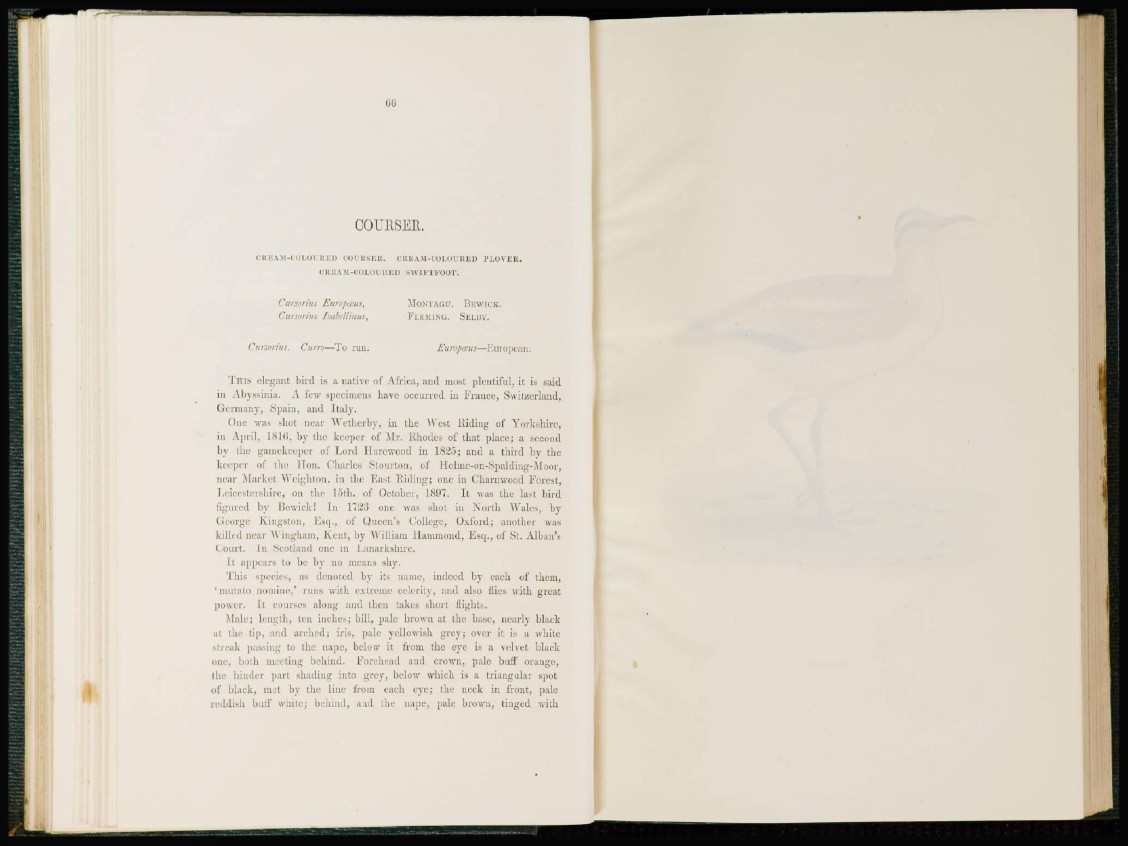
COURSER.
CREAM.-COLOU RED COURSER. CREAM-COLOURED PLOVER.
CREAM-COLOURED SWIFTFOOT.
Cursorim Europ&us, MONTAGU. BEWICK.
Cursorius Tsabellmus, FLEMING. SELBY.
Cursorius. Curro—To run. Europceus—European.
T i n s elegant bird is a native of Africa, and most plentiful, it is said
in Abyssinia. A few specimens have occurred in France, Switzerland,
Germany, Spain, and Italy.
One was shot near Wetherby, in the West Riding of Yorkshire,
¡11 April, 181(5, by the keeper of Mr. Rhodes of that place; a second
by the gamekeeper of Lord Harewood in 1825; and a third by t he
keeper oi 1 he I ion. Charles St our ton, of J lolmc-on-Spalding-Moor,
near .Market \\ eighton, in the East Riding; one in Charnwood Forest,
Leicestershire, on the loth, of October, 1897. It was the last bird
figured by Bewick! In 17:23 one was shot in IS'orth Wales, by
George Kingston, Esq., of Queen's College, Oxford; another was
killed near \\ ingham, Kent, by William Hammond, Esq., of St. Alban's
Court. In Scotland one in Lanarkshire.
It appears to be by no means shy.
This species, as denoted by its name, indeed by each of them,
' m u t a t o nomine,' runs with extreme celerity, and also flies with great
po\\ er. 11 courses along and then takes short flights.
Male; length, ten inches; bill, pale brown at the base, nearly black
at the tip, and arched; iris, pale yellowish grey; over it is a white
streak passing to the nape, below it from the eye is a velvet black
one, both meeting behind. Forehead and crown, pale buff orange,
the hinder part shading into grey, below which is a triangular spot
of black, mot by the line from each eye; the neck in front, pale
reddish half white; behind, and the nape, pale brown, tinged with